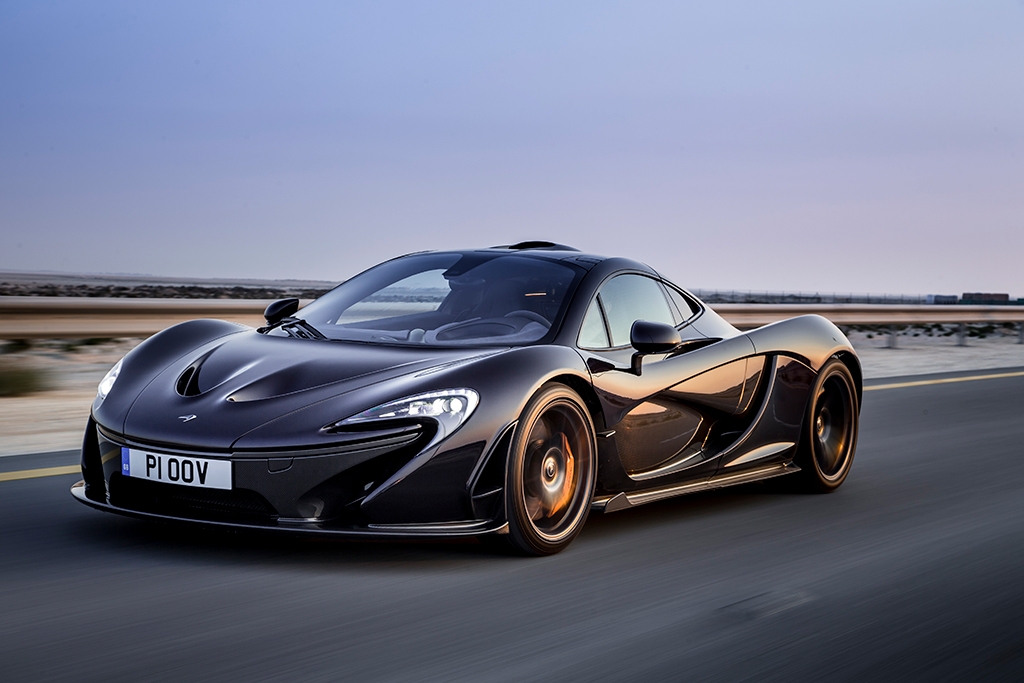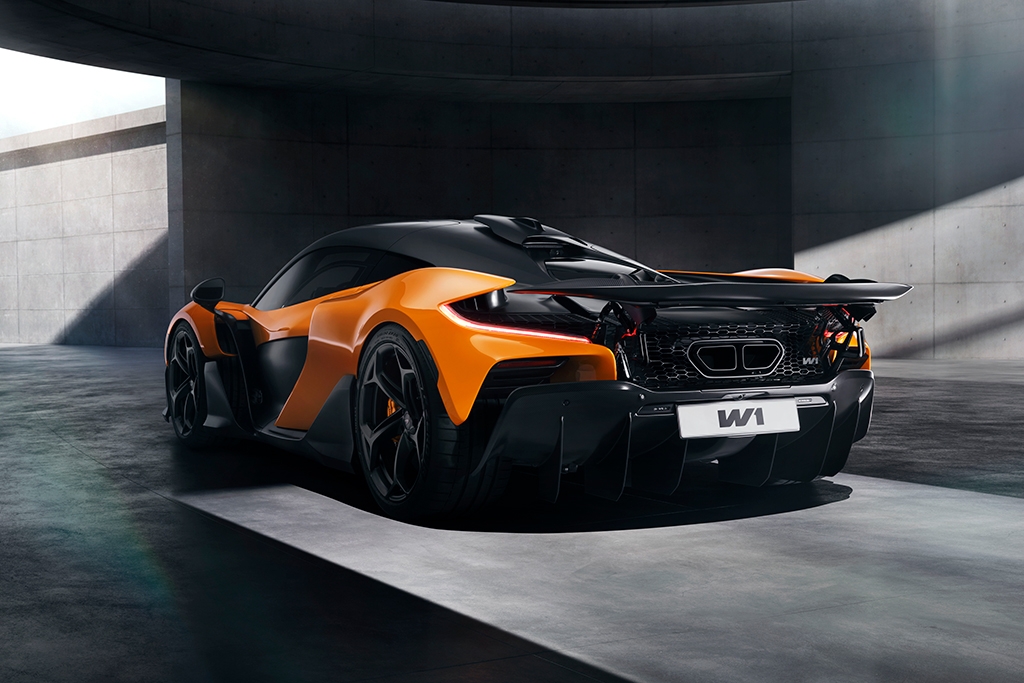McLaren celebrates its rich heritage of carbon fibre use
10 Mar 2025|135 views
Lightweight, strong, and rigid, carbon fibre plays an essential part in delivering supercars with the best possible combination of attributes on road and track. Every single McLaren production car since the first (McLaren F1) has been based on a chassis made from this composite material, enabling designers to create cars with incredible aesthetics and aerodynamic efficiency.
In 1981, the MP4/1 revolutionised Formula One as the first race car to use a full carbon fibre monocoque chassis, pioneering widespread carbon fibre adoption in motorsport. The superiority of carbon fibre from a safety perspective was demonstrated at the 1981 Italian Grand Prix, as McLaren driver John Watson walked away from a huge 225km/h accident unharmed. This was pivotal in convincing the wider Formula One paddock that carbon fibre chassis technology would be the future of safety in motorsport.
Pioneering the use of carbon fibre in road cars, the 1993 McLaren F1 boasted unmatched performance thanks to its light weight (1,140kg) and immense power of 618bhp from its V12 engine. The carbon fibre monocoque allowed the car to achieve a significant power-to-weight ratio previously unheard of in road cars.
As the first road car to be produced by McLaren Automotive at the state-of-the-art McLaren Production Centre in 2011, the McLaren 12C introduced the MonoCell: A single-piece carbon fibre tub which was one of several revolutionary new technologies introduced by the 12C to the supercar segment; its torsional rigidity being so great that the Spider variant of the 12C required no additional chassis strengthening.
Just two years later, the McLaren P1 was launched in 2013. Its full carbon fibre body structure incorporated not only the roof and lower structures, roof snorkel, engine air intake cavity, but also the battery and power electronics housing that were integral to the P1's high performance hybrid powertrain, in a structure - weighing only 90kg - known as MonoCage.
The McLaren 720S - launched in 2017 - brought about the Monocage II carbon fibre structure that comprises the entire passenger cell, combining a carbon fibre tub with an upper structure in carbon fibre to further enhance lightweight attributes that, when combined with B-pillars positioned rearwards on the cab-forward cockpit, contributes to a sensation of exceptional space.
A 50-million-pound investment resulted in the opening of the McLaren Composites Technology Centre (MCTC) in Sheffield, U.K. in 2018, marking the first standalone McLaren production facility outside of Woking, which aimed to produce new-generation carbon fibre tubs that can directly integrate with future powertrain technologies.
In 2021, the McLaren Artura introduced the McLaren Carbon Lightweight Architecture (MCLA), specifically made to integrate a new generation of high-performance hybrid powertrains. Lighter and stronger than its predecessors, the MCLA supports the Artura's hybrid V6 powertrains and marked a revolutionary moment in carbon fibre monocoque technology by incorporating a safety cell for the battery of the hybrid system used by the Artura, as well as integrating further crash and load-bearing functionality into the tub.
Continuing the marque's lightweight carbon fibre DNA evolution, the launch of the McLaren W1 in 2024 brought about the Aerocell. Constructed using pre-preg carbon fibre, this technology - also used on the hyper exclusive, track-only Solus GT - uses composite that has been pre-impregnanted with a resin system, simplifying the curing process. Pressure treatment is then applied to the mould, giving the Aerocell a higher structural strength than comparable tubs.
This also saw the introduction of the brand's next-generation carbon fibre technology: The McLaren Automated Rapid Tape (ART) carbon fibre. Lighter and stiffer and produced with fewer waste materials, it unlocked new possibilities for engineers and enabled the rapid creation of optimised carbon fibre parts with specialised properties. The active front wing of the W1 debuts this new technology.
Lightweight, strong, and rigid, carbon fibre plays an essential part in delivering supercars with the best possible combination of attributes on road and track. Every single McLaren production car since the first (McLaren F1) has been based on a chassis made from this composite material, enabling designers to create cars with incredible aesthetics and aerodynamic efficiency.
In 1981, the MP4/1 revolutionised Formula One as the first race car to use a full carbon fibre monocoque chassis, pioneering widespread carbon fibre adoption in motorsport. The superiority of carbon fibre from a safety perspective was demonstrated at the 1981 Italian Grand Prix, as McLaren driver John Watson walked away from a huge 225km/h accident unharmed. This was pivotal in convincing the wider Formula One paddock that carbon fibre chassis technology would be the future of safety in motorsport.
Pioneering the use of carbon fibre in road cars, the 1993 McLaren F1 boasted unmatched performance thanks to its light weight (1,140kg) and immense power of 618bhp from its V12 engine. The carbon fibre monocoque allowed the car to achieve a significant power-to-weight ratio previously unheard of in road cars.
As the first road car to be produced by McLaren Automotive at the state-of-the-art McLaren Production Centre in 2011, the McLaren 12C introduced the MonoCell: A single-piece carbon fibre tub which was one of several revolutionary new technologies introduced by the 12C to the supercar segment; its torsional rigidity being so great that the Spider variant of the 12C required no additional chassis strengthening.
Just two years later, the McLaren P1 was launched in 2013. Its full carbon fibre body structure incorporated not only the roof and lower structures, roof snorkel, engine air intake cavity, but also the battery and power electronics housing that were integral to the P1's high performance hybrid powertrain, in a structure - weighing only 90kg - known as MonoCage.
The McLaren 720S - launched in 2017 - brought about the Monocage II carbon fibre structure that comprises the entire passenger cell, combining a carbon fibre tub with an upper structure in carbon fibre to further enhance lightweight attributes that, when combined with B-pillars positioned rearwards on the cab-forward cockpit, contributes to a sensation of exceptional space.
A 50-million-pound investment resulted in the opening of the McLaren Composites Technology Centre (MCTC) in Sheffield, U.K. in 2018, marking the first standalone McLaren production facility outside of Woking, which aimed to produce new-generation carbon fibre tubs that can directly integrate with future powertrain technologies.
In 2021, the McLaren Artura introduced the McLaren Carbon Lightweight Architecture (MCLA), specifically made to integrate a new generation of high-performance hybrid powertrains. Lighter and stronger than its predecessors, the MCLA supports the Artura's hybrid V6 powertrains and marked a revolutionary moment in carbon fibre monocoque technology by incorporating a safety cell for the battery of the hybrid system used by the Artura, as well as integrating further crash and load-bearing functionality into the tub.
Continuing the marque's lightweight carbon fibre DNA evolution, the launch of the McLaren W1 in 2024 brought about the Aerocell. Constructed using pre-preg carbon fibre, this technology - also used on the hyper exclusive, track-only Solus GT - uses composite that has been pre-impregnanted with a resin system, simplifying the curing process. Pressure treatment is then applied to the mould, giving the Aerocell a higher structural strength than comparable tubs.
This also saw the introduction of the brand's next-generation carbon fibre technology: The McLaren Automated Rapid Tape (ART) carbon fibre. Lighter and stiffer and produced with fewer waste materials, it unlocked new possibilities for engineers and enabled the rapid creation of optimised carbon fibre parts with specialised properties. The active front wing of the W1 debuts this new technology.
Latest COE Prices
August 2025 | 2nd BIDDING
NEXT TENDER: 03 Sep 2025
CAT A$104,524
CAT B$124,400
CAT C$72,190
CAT E$125,001
View Full Results Thank You For Your Subscription.




































